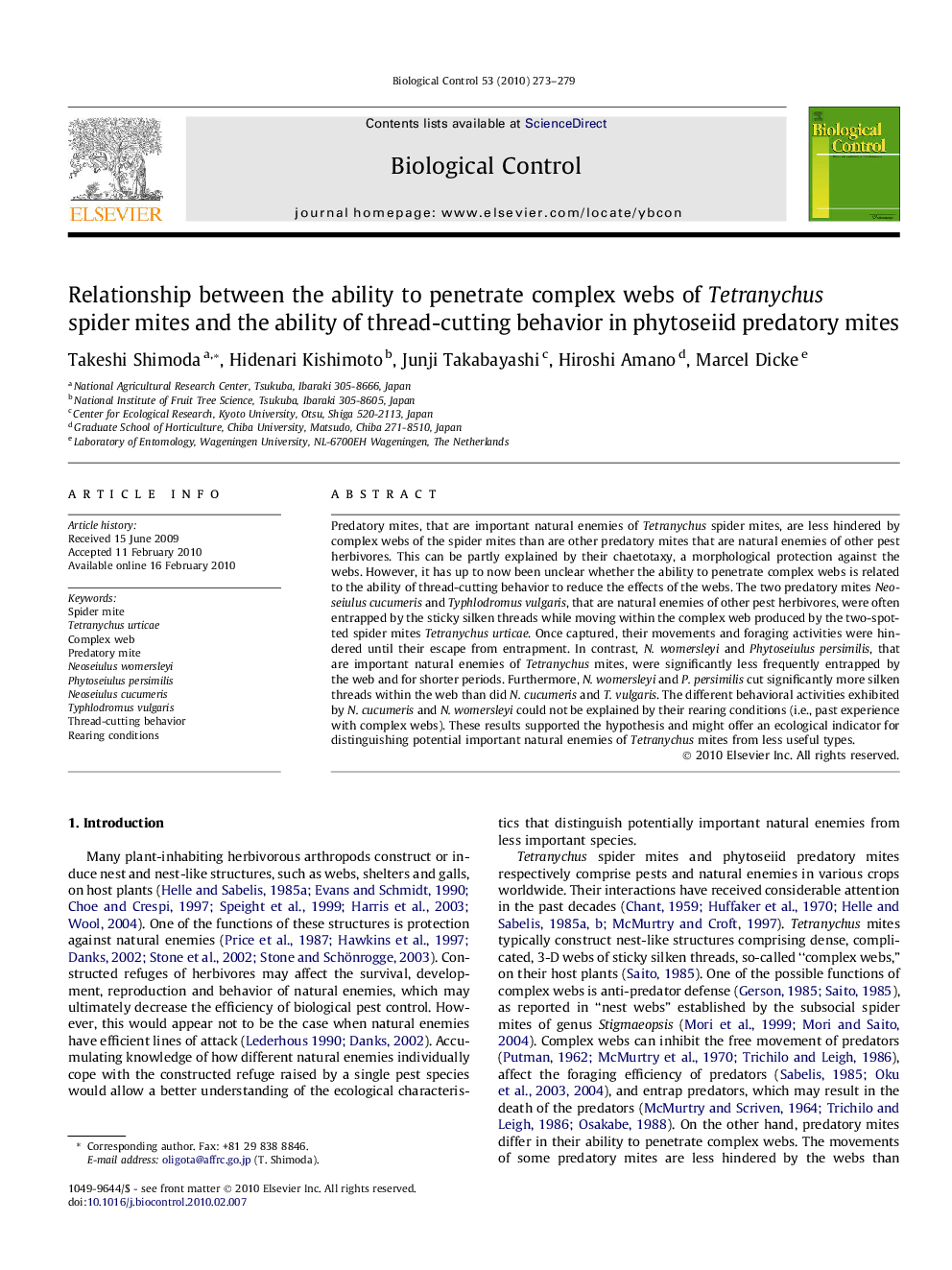| Article ID | Journal | Published Year | Pages | File Type |
|---|---|---|---|---|
| 4504381 | Biological Control | 2010 | 7 Pages |
Predatory mites, that are important natural enemies of Tetranychus spider mites, are less hindered by complex webs of the spider mites than are other predatory mites that are natural enemies of other pest herbivores. This can be partly explained by their chaetotaxy, a morphological protection against the webs. However, it has up to now been unclear whether the ability to penetrate complex webs is related to the ability of thread-cutting behavior to reduce the effects of the webs. The two predatory mites Neoseiulus cucumeris and Typhlodromus vulgaris, that are natural enemies of other pest herbivores, were often entrapped by the sticky silken threads while moving within the complex web produced by the two-spotted spider mites Tetranychus urticae. Once captured, their movements and foraging activities were hindered until their escape from entrapment. In contrast, N.womersleyi and Phytoseiulus persimilis, that are important natural enemies of Tetranychus mites, were significantly less frequently entrapped by the web and for shorter periods. Furthermore, N. womersleyi and P. persimilis cut significantly more silken threads within the web than did N. cucumeris and T. vulgaris. The different behavioral activities exhibited by N. cucumeris and N. womersleyi could not be explained by their rearing conditions (i.e., past experience with complex webs). These results supported the hypothesis and might offer an ecological indicator for distinguishing potential important natural enemies of Tetranychus mites from less useful types.
